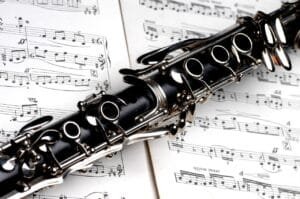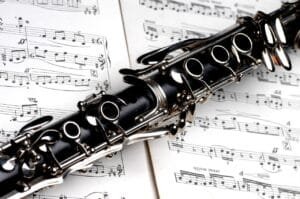What Role Did John Coltrane Play in the Civil Rights Movement?
When you think of jazz, do you ever consider the deeper meanings behind those beautiful notes? What if I told you that the genius of John Coltrane wasn’t just about his innovative sounds but also his unwavering commitment to social justice? The connection between Coltrane and the Civil Rights Movement is profound, revealing how art can serve as a vehicle for change and convey powerful messages of hope, resistance, and unity.

A Glimpse into John Coltrane’s Life
You might be familiar with Coltrane as one of the greatest jazz musicians ever, but understanding his personal life is crucial in grasping why his music resonated so strongly during the Civil Rights Movement. Birthdays rarely mean much, but Coltrane’s birth on September 23, 1926, in Hamlet, North Carolina, certainly set the stage for a life intertwined with both music and activism. Coming from a musical family, his early exposure to various genres shaped the way he would later articulate the painful experiences faced by African Americans through his saxophone.
Early Influences
Consider how his upbringing in a racially segregated environment played a significant role in shaping his identity. Being Black in America during the mid-20th century wasn’t just about evolving music styles; it was about navigating a society riddled with prejudice and injustice. Coltrane’s musical mentors—like Charlie Parker and Thelonious Monk—were not merely performers; they were innovators who challenged social norms through their craft. By absorbing their legacy, Coltrane learned how to use music as a powerful weapon against oppression.
A Struggle with Personal Demons
It’s important to acknowledge that Coltrane’s journey wasn’t without its struggles. After facing personal challenges, including addiction, he found both spiritual renewal and profound inspiration in the teachings of Eastern philosophies. This transformation fed into his creative output, allowing him to articulate both personal and collective pain. Imagine how that quest for redemption translated into sounds that spoke to a generation yearning to break free from shackles—both literal and metaphorical.
The Context of the Civil Rights Movement
As you think about Coltrane and his music, it’s essential to place him within the broader socio-political context of the Civil Rights Movement, which was gaining momentum in the 1950s and 1960s. This was a time when people protested for basic human rights, often exercising their voice through various artistic avenues, including music.
Key Events and Figures
The movement underscores critical events such as the Montgomery Bus Boycott, the March on Washington, and the Selma to Montgomery marches. Leaders like Martin Luther King Jr., Rosa Parks, and Malcolm X fought valiantly for justice and equality, often inspiring musicians like Coltrane. Reflect on how these very events influenced and fueled Coltrane’s artistry and passion.

Coltrane’s Music as a Protest Tool
How did Coltrane transform his personal experiences and societal struggles into powerful musical expressions? The answer lies in the evolution of his compositions—especially during the late 1950s when his works began to reflect the urgency of the Civil Rights struggle.
“A Love Supreme”: A Musical Manifesto
One of Coltrane’s most significant works, “A Love Supreme,” isn’t just an album; it’s a spiritual journey rooted deep in the fight for civil rights. Completed in 1964, this four-part suite symbolizes Coltrane’s gratitude to a higher power while also evoking themes of love and unity.
- The opening movement, “Acknowledgment,” feels like a call to consciousness. You can almost hear the urgent cry for recognition of human dignity.
- “Resolution” showcases the resolve that transcends suffering—an echo of the strength within the African American community during the turbulent times of the Civil Rights Movement.
- Each segment of the album reflects not only Coltrane’s spiritual awakening but also acts as an ode to those who fought tirelessly for societal change.
By embracing and infusing spirituality into his music, Coltrane connected with a wider audience emotionally and ideologically, making his work not just a personal statement but a collective rallying cry.
Performances that Made a Statement
Coltrane’s live performances were often charged with the spirit of the movement. During concerts, he would sometimes use extended improvisations that mirrored the emotional intensity of protests—exhibiting freedom while highlighting the collective struggles of his people. Imagine being in a crowded jazz club in the 1960s, feeling the air thrum with the beats of resistance woven into each note. His music wasn’t merely for entertainment; it was a visceral experience urging listeners to feel the weight of oppression while simultaneously experiencing the joy of liberation.
Intersections of Art and Activism
You may wonder about the delicate boundary between art and activism. For some, these two realms may seem distinct, but for Coltrane, they were irrevocably intertwined. His music served not just as a means of artistic expression but also as a form of activism.
Collaborations with Civil Rights Leaders
Coltrane aligned himself with civil rights leaders not just through his melodies but also through his networks and collaborations. He supported events aimed at raising awareness such as the 1964 event with fellow jazz luminaries to benefit civil rights organizations. Such actions were as important as his music, blending his sound with active participation in the movement.
The Role of Other Jazz Musicians
The contributions of his contemporaries—like Max Roach, Charles Mingus, and Nina Simone—complemented Coltrane’s activism. You might find that musicians often worked hand-in-hand, creating a potent musical and political tapestry that heightened the awareness of civil rights issues. Their collective efforts created a unified voice that echoed the struggles and triumphs of the movement, leaving an indelible mark on American culture.

Legacy: How Coltrane Influenced Future Generations
As you consider Coltrane’s impact, you’re likely to find that his influence extends far beyond jazz and the civil rights era. His genre-blurring efforts helped pave the way for a rich array of musical expressions that tell stories of struggle, resilience, and hope, continuing to resonate through various artistic forms today.
Influence on Future Musicians
You might be surprised to learn that artists like Kamasi Washington, Esperanza Spalding, and even contemporary hip-hop artists cite Coltrane as an influence. By incorporating elements of his style and spirit into their music, these artists carry forward his message of resistance and unity. They do this while navigating their own unique struggles—showing how Coltrane’s legacy lives on in those who wish to use their music as a tool for change.
Coltrane’s Music in the Modern Context
The socio-political issues that Coltrane faced continue to be relevant today, from systemic racism to social inequality. How does that make you feel as you listen to his music? It serves as a reminder that, while progress has been made, there is still work to do. His compositions encourage you, the listener, to reflect on current realities and become part of the ongoing dialogue for equality.
Conclusion: The Enduring Spirit of John Coltrane
As you take a moment to reflect on John Coltrane’s profound connection to the Civil Rights Movement, it’s clear that his artistry transcended mere entertainment. Coltrane was not only a revolutionary musician; he was a voice for change, a preceptor of hope, and a beacon of resilience.
These chords, these melodies—they’re more than just sounds. They are powerful statements that remind us to stand up for justice, to fight for the dignity of every human being, and to honor the struggles of those who came before us. So, as you listen to Coltrane, allow yourself to engage deeply with his music and consider how you, too, can use your voice—whatever form that may take—to contribute to this ongoing quest for justice and equality. Your participation might just be the musical note needed to strike harmony in today’s world.



